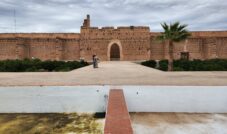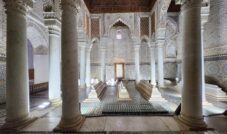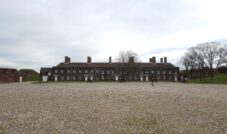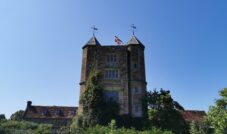My most favourite place I visited in Marrakech was Le Jardin Majorelle – it’s definitely worth visiting. The bright colours were a dream to photograph.
I found the streets of Marrakech a little too busy. I was constantly worried about being clipped by a scooter from behind. Le Jardin Majorelle offered a pleasant stroll away from the hustle and bustle (not that it wasn’t busy with visitors of course, but at least there were no scooters!).
My Photos of Le Jardin Majorelle YSL Garden
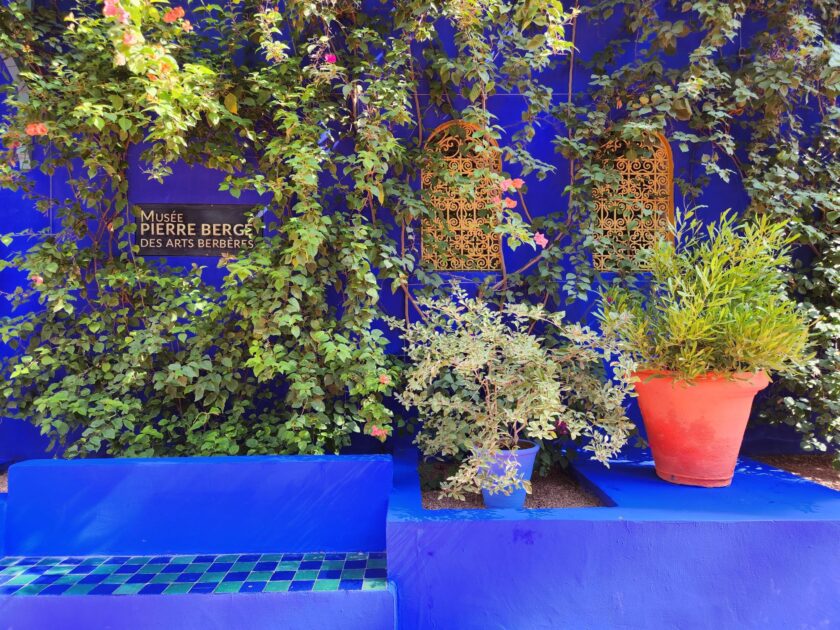
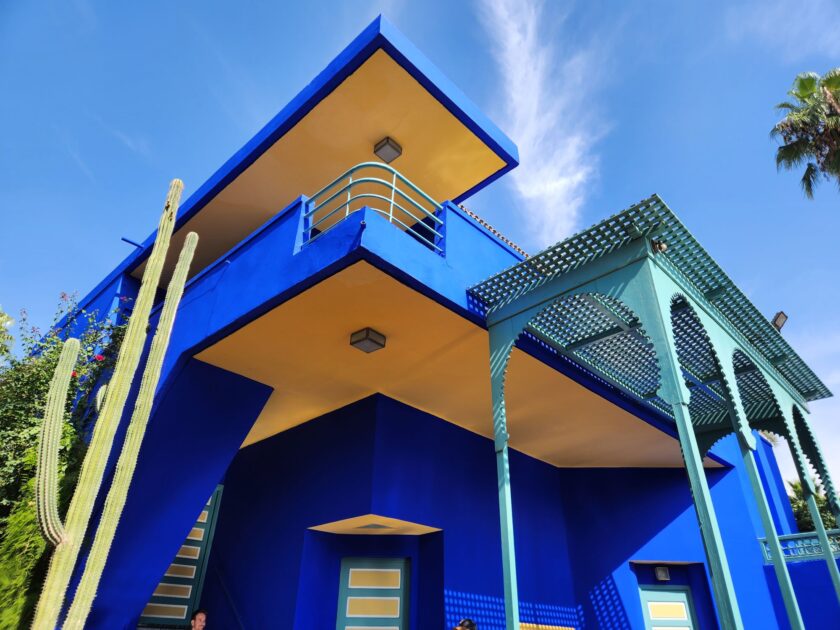
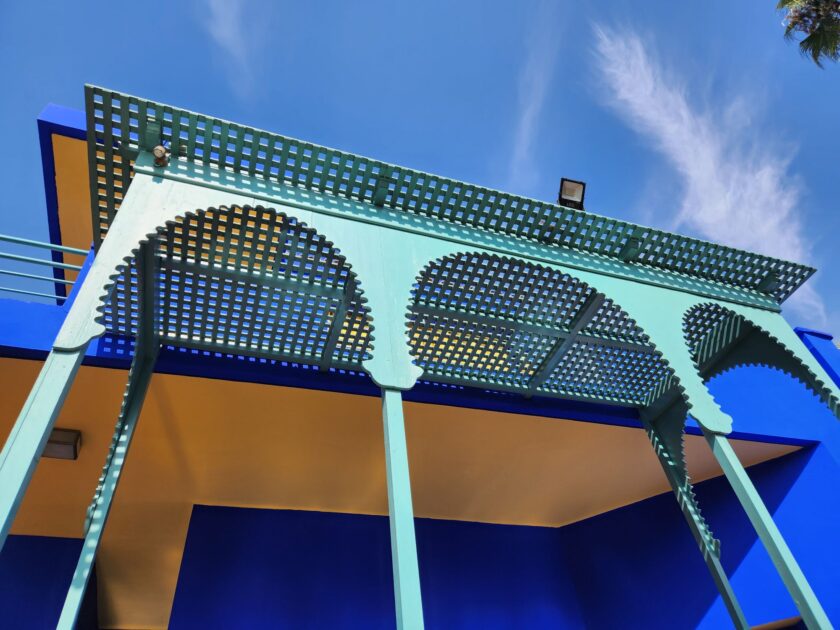
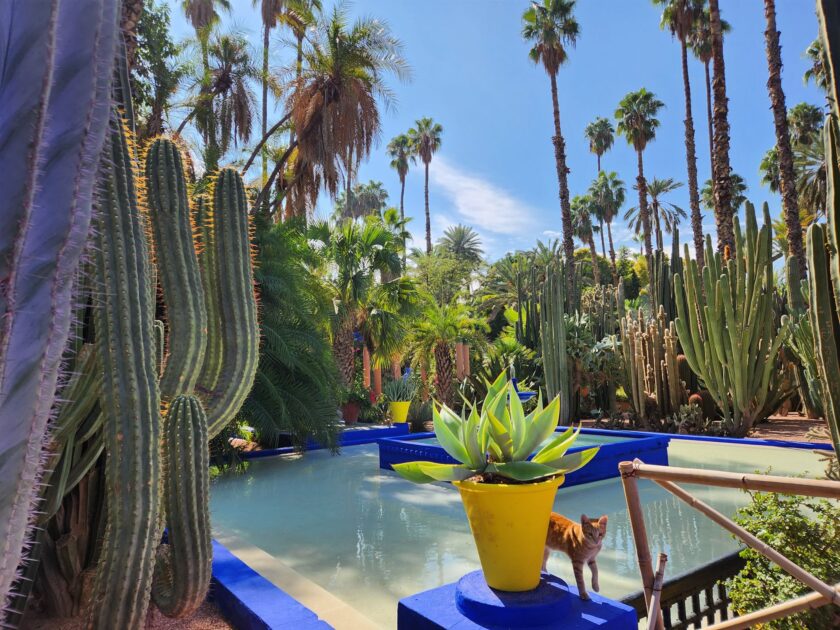
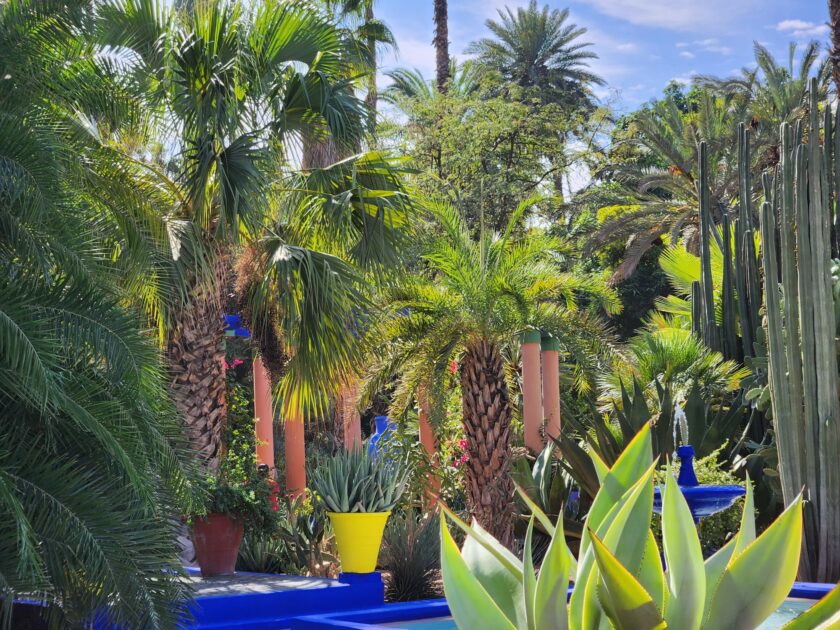
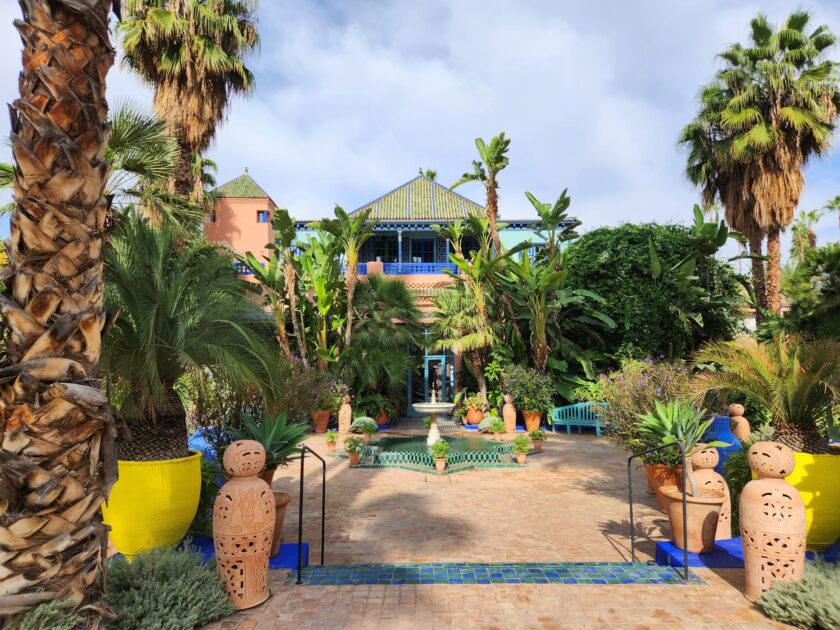
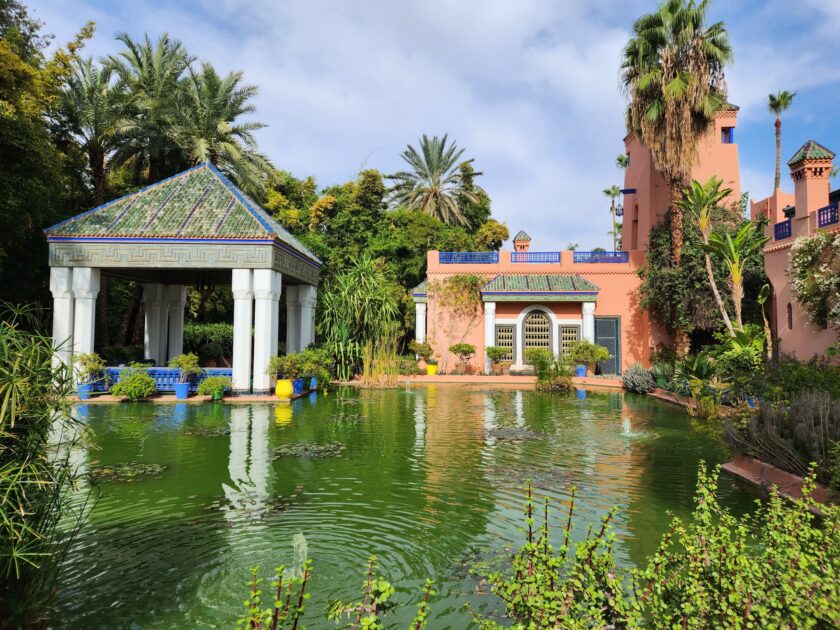
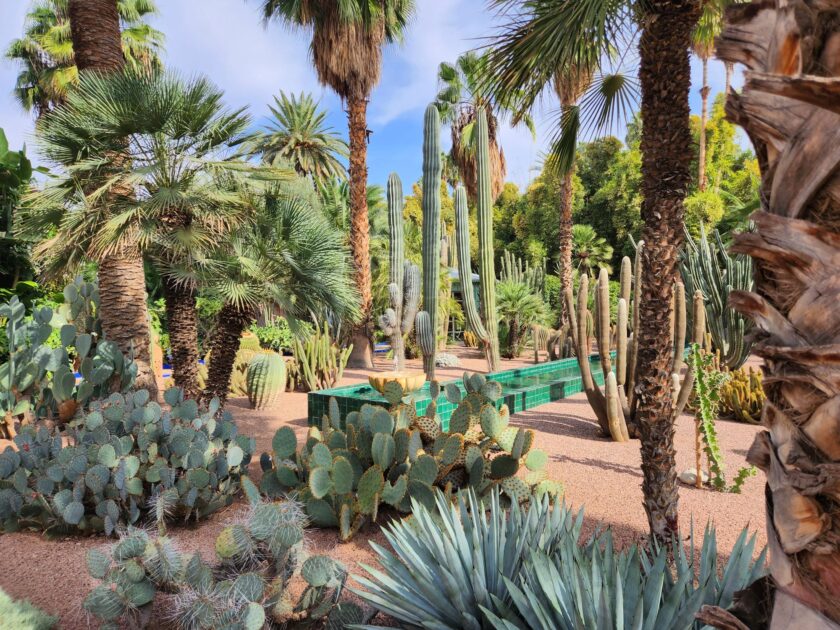
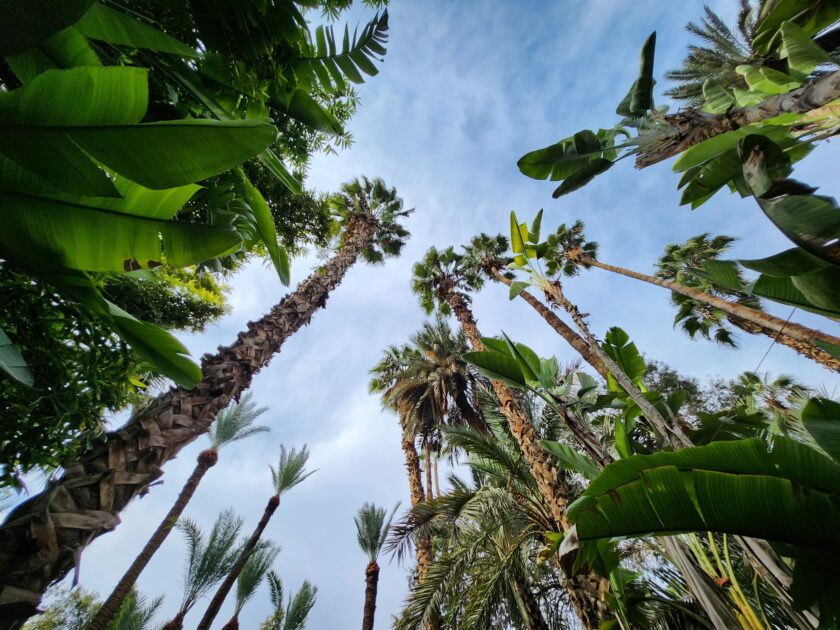
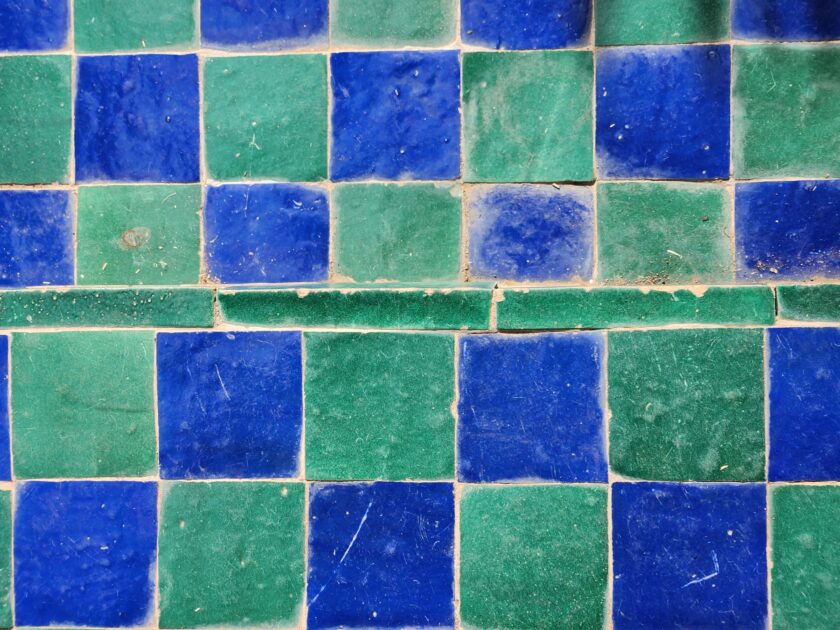
You might be interested in…
I wished I read the history of Le Jardin Majorelle before I visited as I would have appreciated the experience more. Read on and discover the origins of Le Jardin Majorelle, it’s creator and what it looks like today.
History of Le Jardin Majorelle YSL Garden
Le Jardin Majorelle is a vibrant botanical garden in Marrakech, Morocco, famed for its electric blue villa and connection to fashion designer Yves Saint Laurent. Originally created by French painter Jacques Majorelle in the 1920s, the garden was his artistic sanctuary, filled with exotic plants collected from around the world. He patented the distinctive cobalt hue now known as “Majorelle Blue,” which colours the villa and garden structures.
After falling into disrepair following Majorelle’s death in 1962, the garden was rescued in 1980 by Yves Saint Laurent and his partner Pierre Bergé. They restored the site, expanded the plant collection, and lived in the adjacent Villa Oasis. Today, the garden is managed by the Fondation Pierre Bergé – Yves Saint Laurent and includes a Berber Museum and nearby YSL Museum. With its bold colours, rare plants, and artistic legacy, Le Jardin Majorelle is one of Marrakech’s most beloved and photogenic attractions.
10 Interesting Facts About Le Jardin Majorelle YSL Garden
- The garden contains over 300 plant species from five continents.
- “Majorelle Blue” was patented by Jacques Majorelle in 1937.
- Yves Saint Laurent’s ashes were scattered in the rose garden after his death in 2008.
- The villa was renamed Villa Oasis by Saint Laurent and Bergé.
- The Berber Museum houses over 600 artefacts from Morocco’s indigenous cultures.
- The garden was nearly demolished for a hotel before Saint Laurent stepped in.
- The site draws over 800,000 visitors annually.
- The garden’s layout was designed like a painting, balancing light and shadow.
- The YSL Museum, opened in 2017, showcases the designer’s iconic creations.
- The street outside was renamed Rue Yves Saint Laurent in 2010.
Things to See and Do at Le Jardin Majorelle YSL Garden
- Stroll the Botanical Paths
Wander through bamboo groves, cactus beds, and palm-lined walkways. The garden’s layout offers surprises at every turn, with bursts of colour and quiet corners. - Admire the Majorelle Blue Villa
Snap photos of the iconic Art Deco building, painted in the garden’s signature blue. It’s one of the most photographed spots in Marrakech. - Visit the Berber Museum
Explore traditional jewellery, textiles, and tools from Morocco’s Berber communities. The museum is housed in Majorelle’s former studio. - Relax by the Lily Pond
Sit beside the tranquil water feature surrounded by water lilies, fountains, and colourful pots. It’s a peaceful spot to pause and reflect. - Browse the Boutique and Bookshop
Pick up YSL-inspired gifts, art books, and Moroccan crafts. The shop is curated with high-quality items. - Enjoy Café Majorelle
Sip mint tea or enjoy light meals in the shaded courtyard café, once the servants’ quarters of the villa. - See the Yves Saint Laurent Memorial
Visit the understated monument in the rose garden, dedicated to the designer’s legacy. - Explore the YSL Museum (next door)
View fashion sketches, haute couture pieces, and personal items from Saint Laurent’s career. A separate ticket is required. - Take Photos of the Colourful Details
Capture vibrant benches, painted pots, and architectural flourishes in bold blues, yellows, and oranges. - Attend Seasonal Events
Look out for exhibitions, cultural talks, and garden tours hosted by the foundation.
Tips for visiting Le Jardin Majorelle
- Book your ticket in advance as it sells out many weeks before
- The cafe offers traditional Moroccan cuisine such as tagines which I can recommend
- The Berber museum is small. I didn’t find it worth buying a ticket
- The shop has several mini postcards of old print posters which I loved
- According to Google, the busiest times are between 11am-1pm, so the best times to visit are the morning or evening.
- There is no dress code at Le Jardin Majorelle
- I recommend saving at least a couple of hours to visit Le Jardin Majorelle
Practical Information for Visiting Le Jardin Majorelle YSL Garden
- Location: Rue Yves Saint Laurent, Marrakech 40090, Morocco
- Opening times: Daily, 8:00 am – 6:30 pm; last entry 6:00 pm
- Entry: Garden only: 150 MAD; Garden + Berber Museum: 200 MAD; Combined ticket with YSL Museum: 300 MAD
- Tickets: Must be booked online in advance via the official website
- Parking: Limited; taxis recommended
- Accessibility: Garden paths mostly accessible; museum has steps
- Dogs: Not permitted
- Food: Café Majorelle on site
- Toilets: Available, including accessible facilities
- Nearby: YSL Museum, Gueliz district, Marrakech Medina



